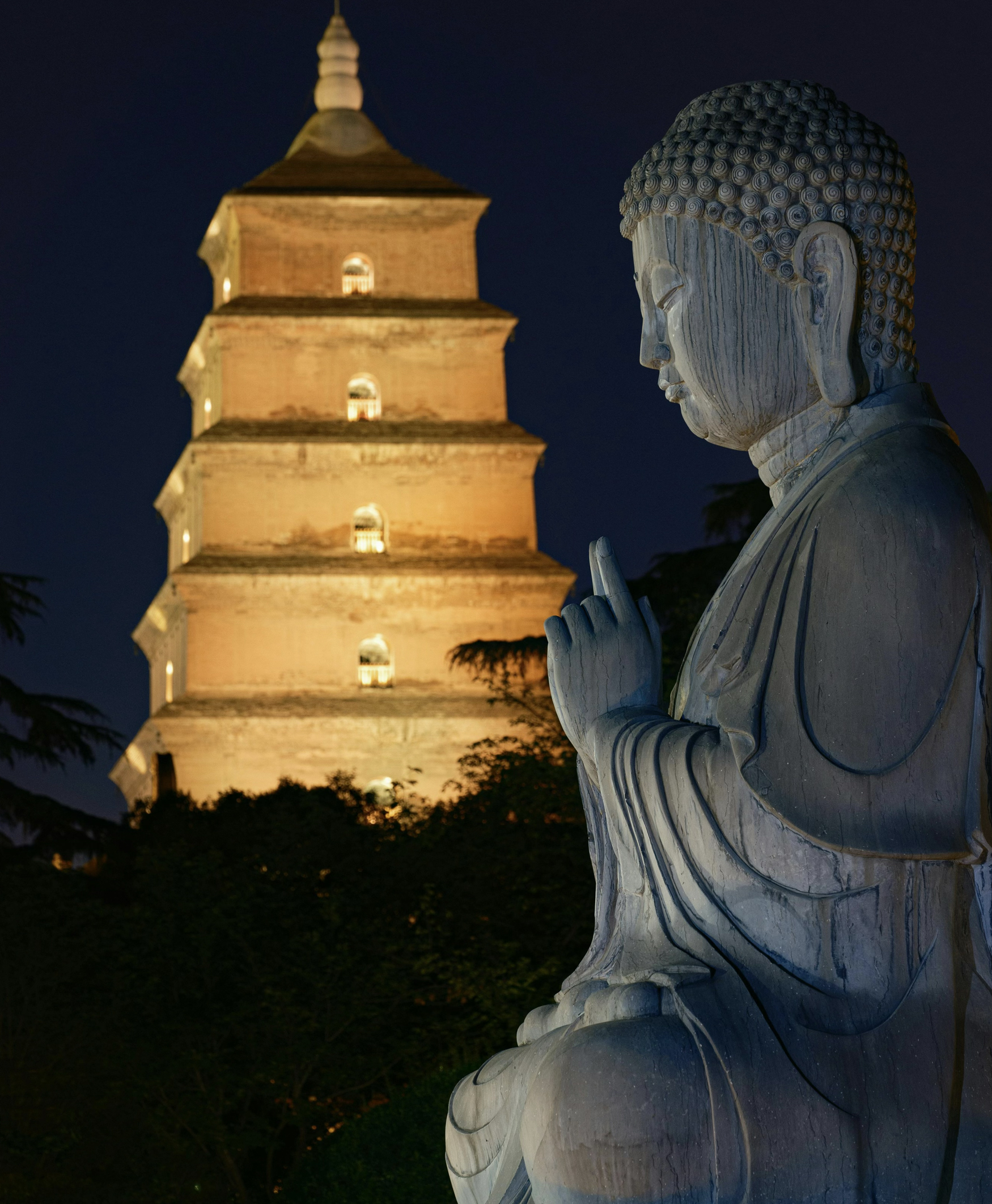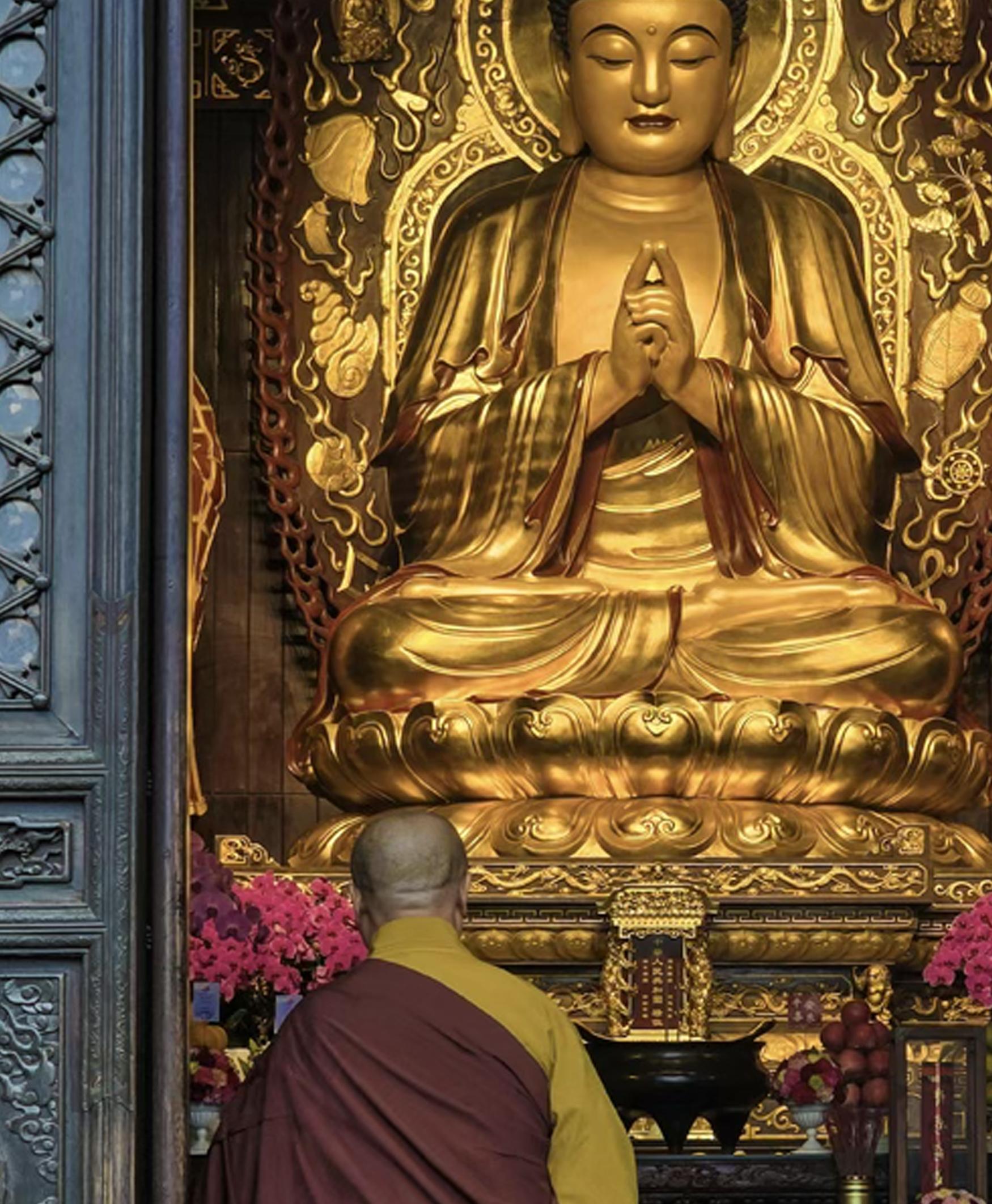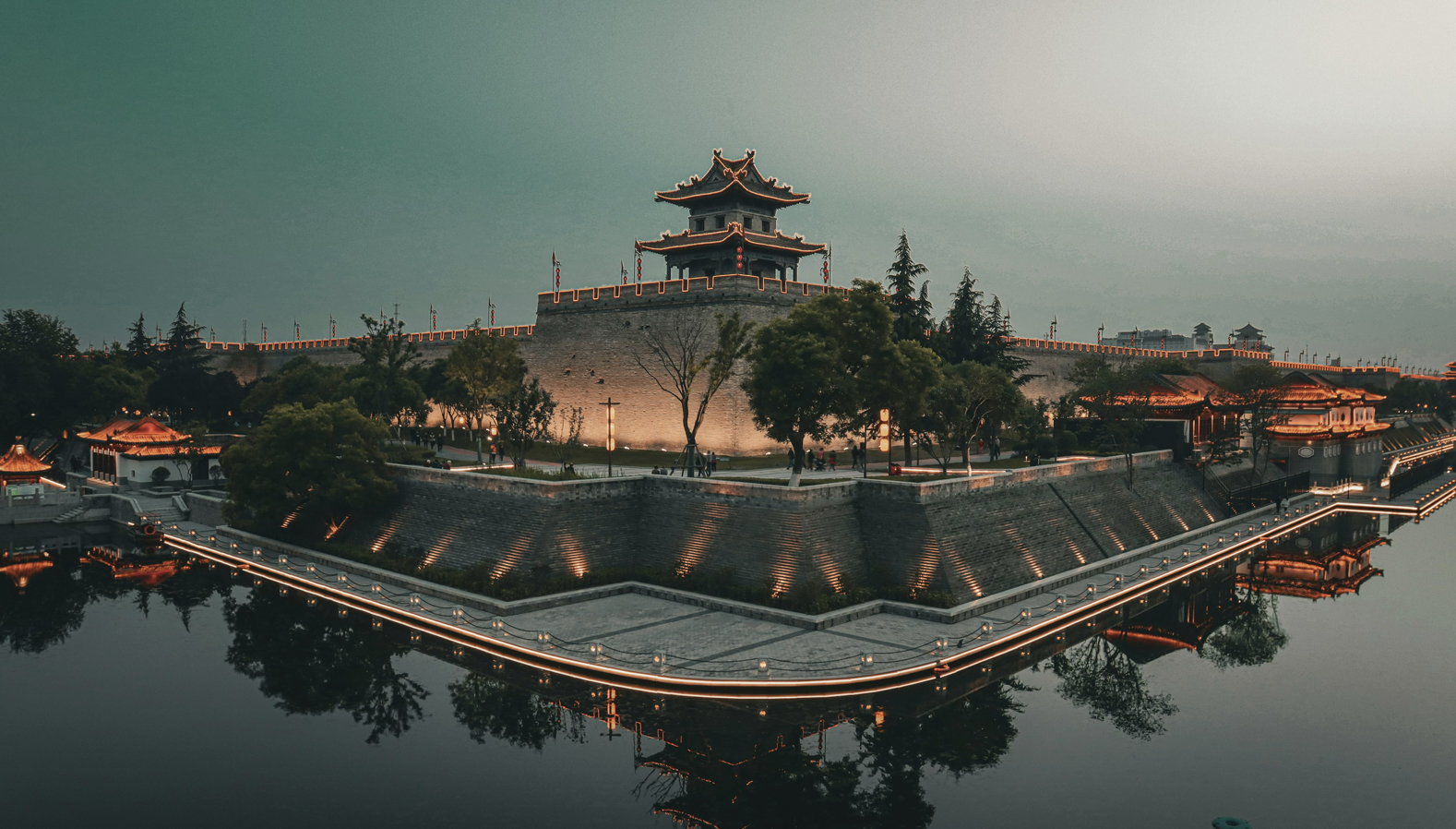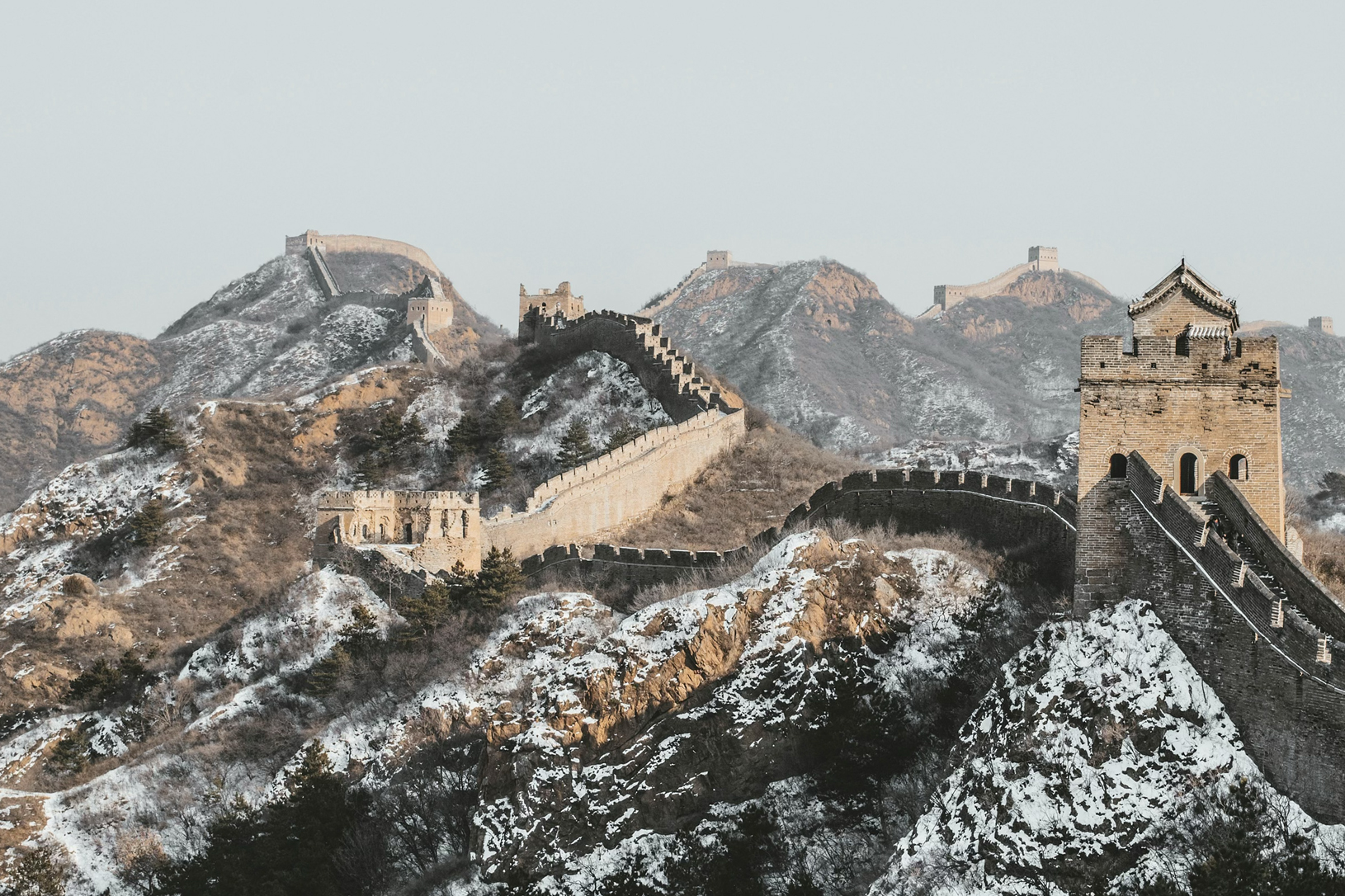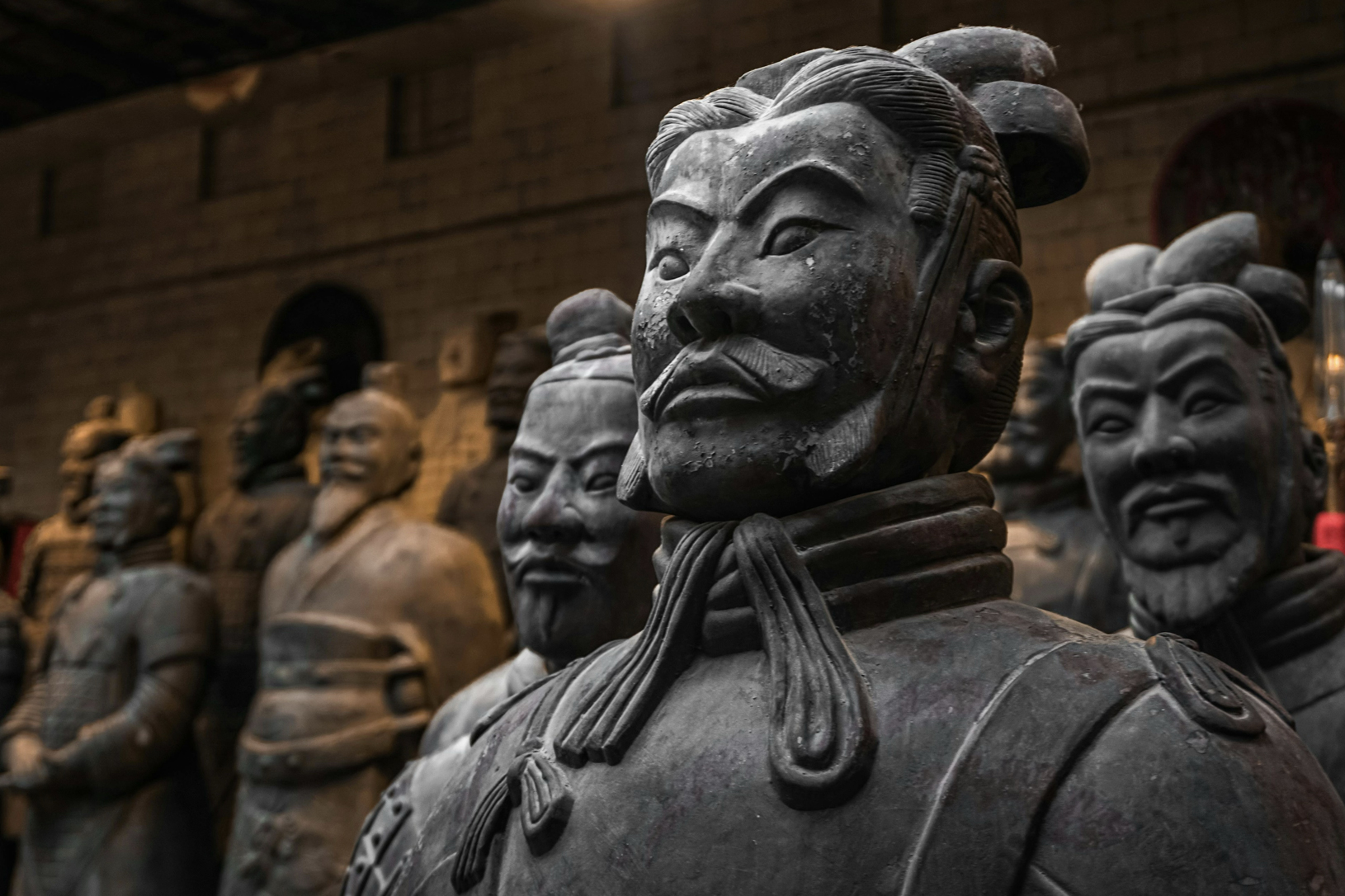Xi’an has always been a meeting point — a city shaped as much by ideas and travellers as by emperors and dynasties. Today we explore it not only through its landmarks but through immersive moments that bring its cultural layers to life. The morning begins atop the City Wall, where the city’s geometry stretches out in every direction. From this elevated walkway we gain a sense of structure and rhythm, but the experience remains personal: a quiet vantage where we pause, breathe and take in a city that once welcomed people from across Asia and beyond.
Descending into the old town, we arrive at the Small Wild Goose Pagoda, a Tang dynasty structure defined by elegant simplicity. In the adjoining museum, instead of browsing passively, we engage with a curated set of objects — Buddhist sculptures, painted tiles and Silk Road ceramics that illustrate how beliefs and artistic styles blended here. Each piece becomes a starting point for conversation, revealing how ideas travelled, merged and influenced the city’s development.
Lunch at De Fa Chang extends this sense of connection. The dumpling banquet comes with quiet storytelling: each shape represents a tradition, a wish or a moment of celebration. The meal becomes a tactile way to understand how Xi’an expresses its history through food, blending symbolism and craftsmanship into something both meaningful and enjoyable.
In the early afternoon, the Big Wild Goose Pagoda deepens the experience. Associated with the monk Xuanzang and his long Silk Road journey, the site holds a calm, reflective atmosphere. Soft chanting drifts from side halls and incense rises through wooden beams. We spend a few unhurried moments in a quiet corner, letting the setting speak through sound, scent and stillness.
From here, the day shifts into the Muslim Quarter. Rather than beginning in the busiest lanes, we start on a quieter street where bakers press dough into clay ovens, spice merchants scoop cumin and chilli and silversmiths engrave patterns in open doorways. These small interactions bring texture to the neighbourhood and show how this community evolved from centuries of exchange.
The Great Mosque sits just beyond these lanes, a serene contrast to the animated markets outside. Its courtyards blend Islamic principles with classical Chinese architecture, creating a rare sense of balance and continuity. Carved pavilions, shaded gardens and calligraphy panels reveal a dialogue between cultures that has unfolded over generations.
The final stop is a shadow-puppet workshop in a traditional courtyard, where artisans cut, dye and articulate translucent figures. Here, the experience becomes hands-on: trying simple carving techniques, learning how pigments are applied and stepping behind the screen to experiment with movements that bring each character to life. It is a moment that blends craft, creativity and storytelling, offering a direct connection to one of Xi’an’s enduring folk traditions.
The day draws to a close with a deeper appreciation of Xi’an’s identity. This is not a city understood through landmarks alone, but through the people, skills and flavours that give its heritage life. The impressions of these encounters remain vivid as we leave the old quarters behind.
